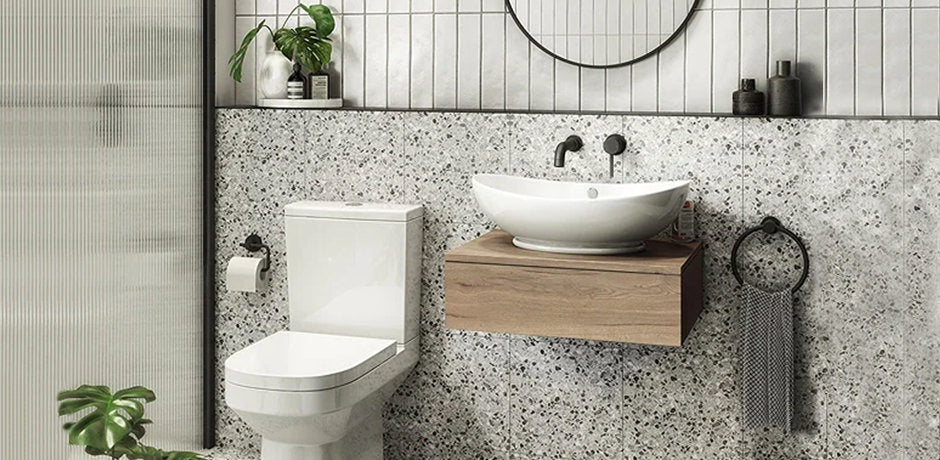
The Science Behind Dual Flush Systems: An In-Depth Look
Share
In our modern era, where environmental preservation has become a pressing concern, understanding the science behind dual flush systems is essential. This innovative technology marks a significant advancement in plumbing, proving how even minor improvements can have a large effect. Primarily used in toilets, dual flush systems provide an eco-friendly water management solution by offering users two flushing options: a full flush for solid waste and a reduced flush for liquid waste.

The Mechanics of Dual Flush Systems
Central to the function of a dual flush toilet is a mechanism that distinguishes between liquid and solid wastes. It effectively employs a dual-valve system that is both straightforward and efficient. When activated, either by a handle or button, it discharges a predetermined volume of water, significantly curtailing overall water usage. In contrast, older single flush toilets often waste water, using far more than necessary for liquid waste.
This revolutionary technology can reduce toilet water consumption by as much as 67%, which is notable considering toilets account for one of the largest shares of water use in a household. A study by This Old House points out that switching to low-flow toilets, including dual flush variants, can significantly lower household water usage, benefiting both the environment and your wallet.
Environmental Impact and Benefits
The environmental advantages provided by dual flush systems are considerable. By minimizing water consumption, we not only safeguard this vital resource but also reduce the energy necessary for pumping, heating, and treating water. This decrease in energy use can help shrink a households overall carbon footprint. Furthermore, less water usage results in reduced wastewater, which lessens the load on sewage systems.
As global awareness of water scarcity grows, technologies like dual flush systems become increasingly indispensable. They can play a critical role in regions facing severe water shortages, making them a vital component of worldwide water conservation efforts. For more insights into water-efficient toilets, check out this article on water-efficient toilets.
How to Choose the Right System
For those considering a dual flush system, it's crucial to familiarize yourself with the various options available. The two main types are gravity-based and pressure-assisted toilets. Gravity systems rely on gravitys natural force for waste removal, while pressure-assisted models utilize additional pressure to improve flushing efficiency.
Your choice of system will depend on numerous factors such as existing plumbing, budget constraints, and your water conservation objectives. Consulting a plumbing specialist or conducting comprehensive research is highly recommended before making your final selection. For valuable guidance on the installation and benefits of dual flush systems, visit Instructables, which offers helpful resources and user experiences.
Technological Innovations and Future Trends
Advancements in dual flush technology continue to progress. Innovations like sensor technology are facilitating the creation of touchless flush systems, which enhance hygiene and further promote water conservation. Additionally, the rise of smart toilets that connect with home automation systems allows users to track water usage in real-time and make informed decisions regarding their water consumption.
Looking ahead, integrating the Internet of Things (IoT) into bathroom fixtures opens up promising possibilities. By linking dual flush systems to smart home networks, users could optimize their water usage using real-time data and analytics, contributing to a more efficient and eco-friendly living space.
To explore low-flow toilets in greater detail, including their mechanics and advantages, check out this informative source on HowStuffWorks.
Conclusion
Grasping the science behind dual flush systems is fundamental for tech enthusiasts and professionals committed to promoting sustainable living. This technology not only provides practical benefits in water and cost savings but also marks a meaningful advancement in environmental conservation. As we confront global challenges related to water scarcity and climate change, adopting such innovations is not only beneficial but necessary.
For additional reading on effective water-saving technologies and practical strategies for improving residential water usage, explore resources from Woodlands Water.

FAQ
What is the primary advantage of dual flush systems?
The key benefit is a significant reduction in water usage, thereby helping conserve resources and lower utility bills.
Can I retrofit my existing toilet with a dual flush system?
Absolutely! Many toilets can be upgraded to dual flush with the right retrofit kits, making it a cost-effective and eco-friendly option.
Are dual flush toilets difficult to maintain?
No, theyre typically easy to maintain, much like traditional toilets, although some components may need occasional checks and replacements.
This article contains affiliate links. We may earn a commission at no extra cost to you.
